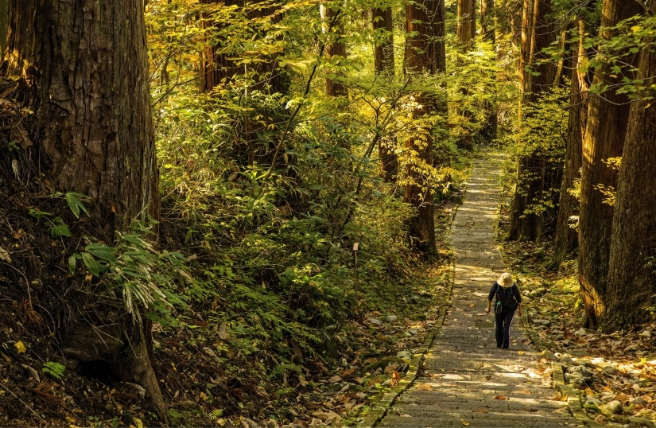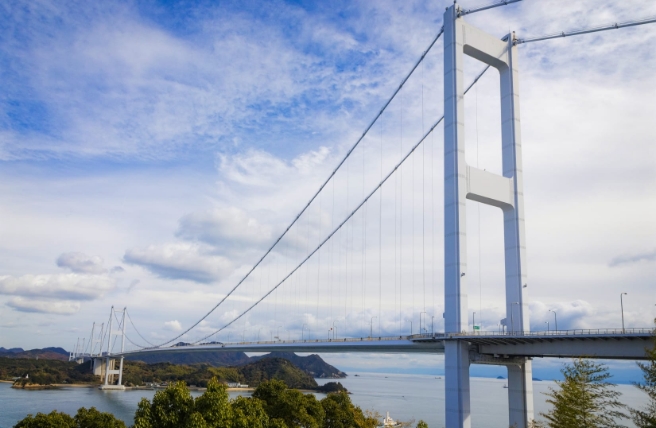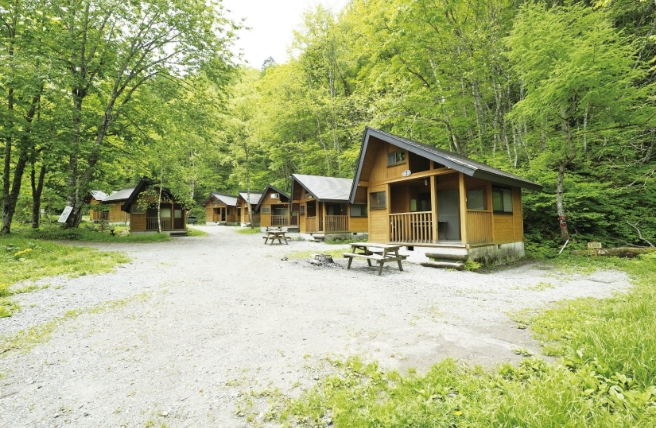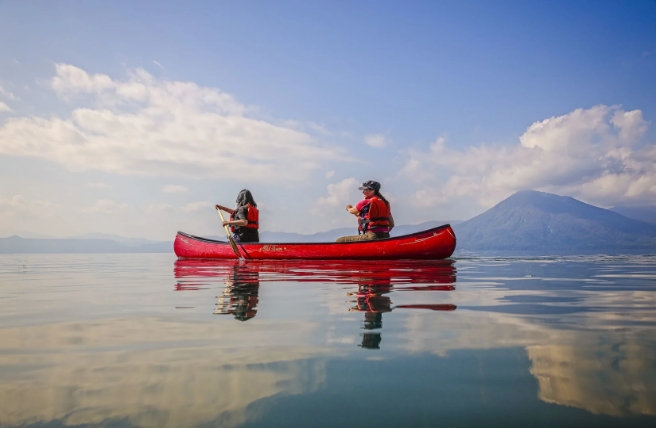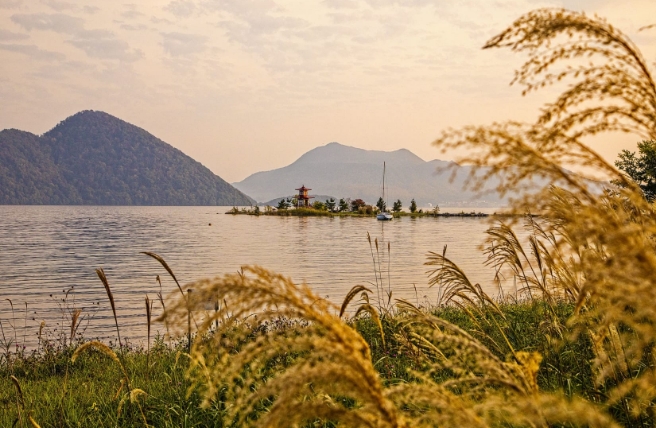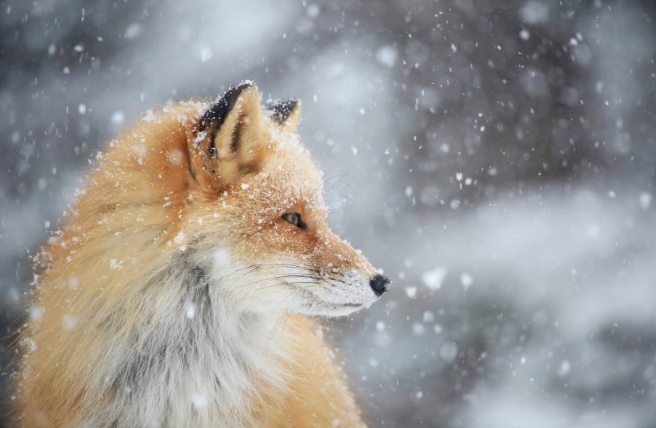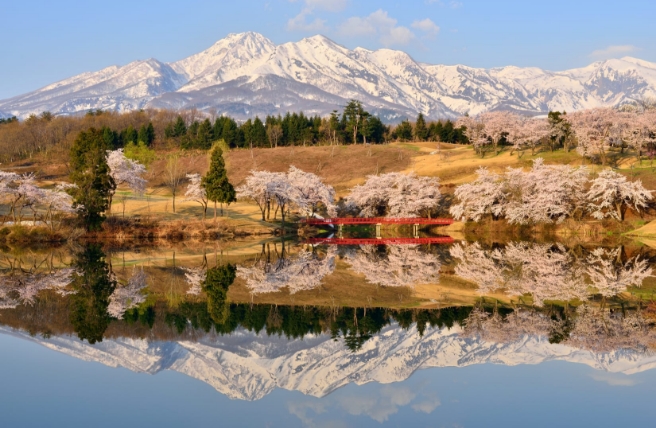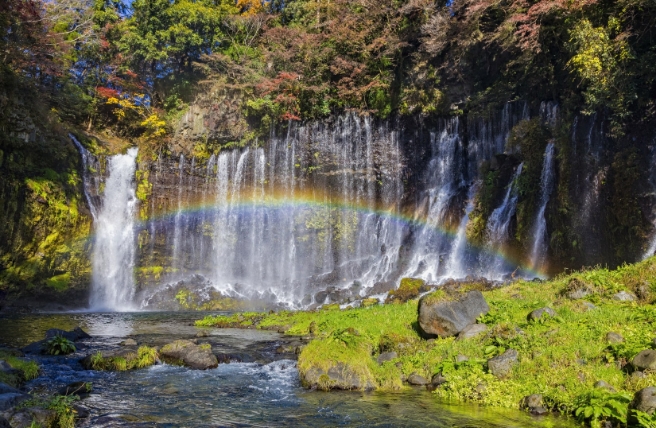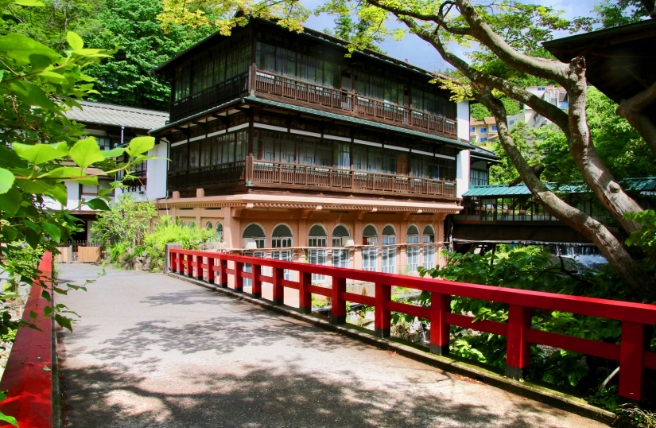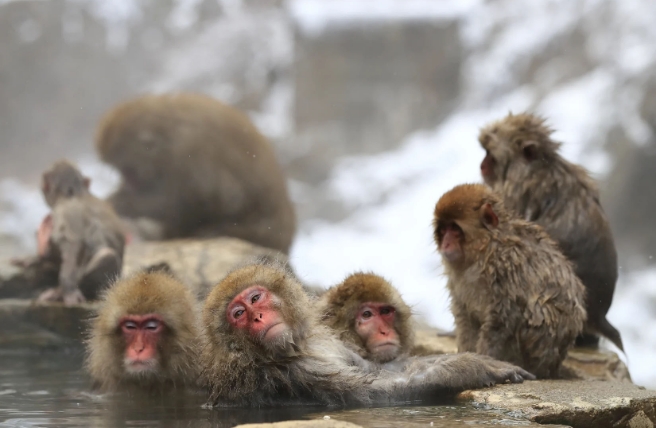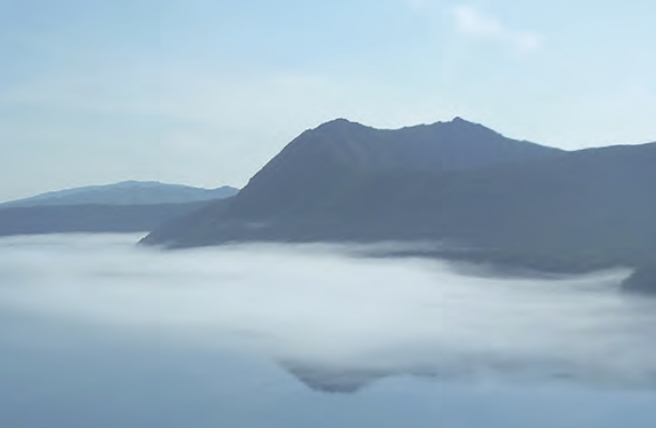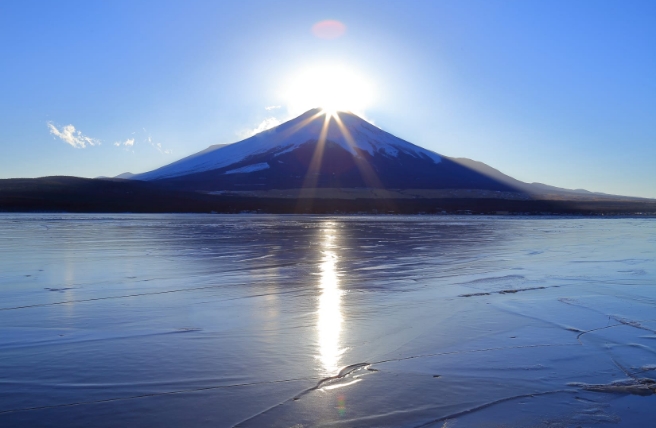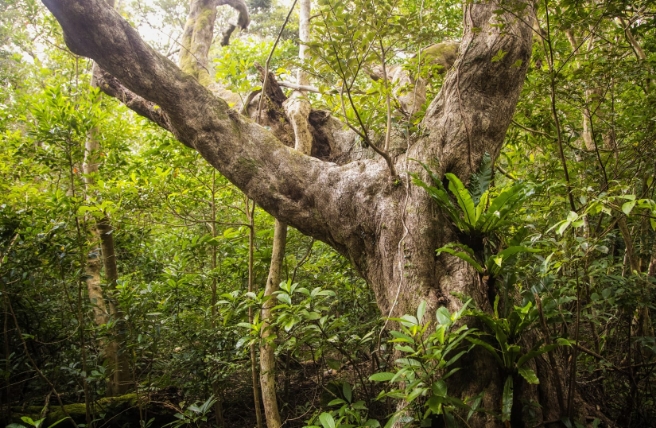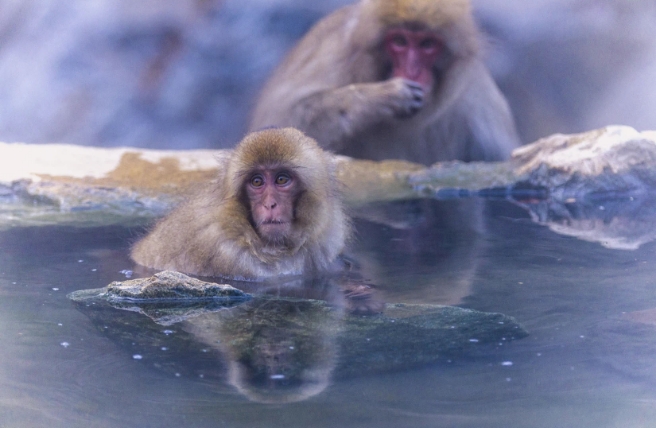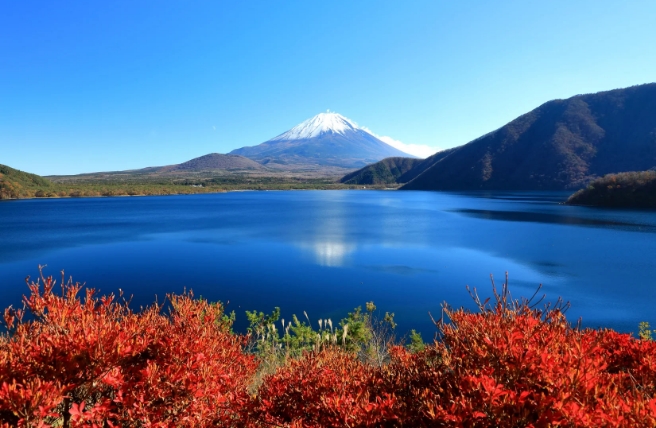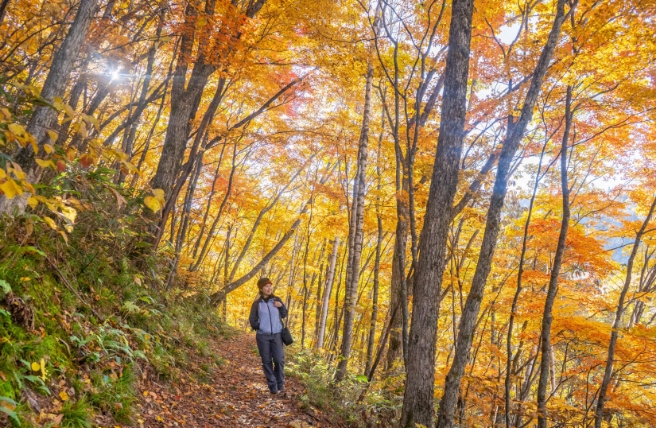Every spring, a range of communities across Japan head out into nearby grasslands to perform carefully controlled burns known as yamayaki. Visually striking, these “mountain burns” are essential to preserving local ecosystems shaped and tended by humans since ancient times.
Semi-natural grassland (hereafter referred to simply as “grassland”) ecosystems in Japan are always the result of maintenance activities such as harvesting grassland resources and grazing livestock in order to prevent reversion to forest. They do not arise naturally, and revert to forests within a decade or two unless properly cared for. The annual tradition of yamayaki, known in some regions as noyaki (“field burns”), is the cornerstone of that care, eliminating dry and withered vegetation to encourage the growth of plants.
Traditional communities maintained grasslands to ensure a steady supply of grasses, which were used for feeding livestock, fertilizing fields, and other purposes, and sedges, which were used for thatching roofs. Also, burning withered grass via yamayaki burned pests that hide in the ground and are harmful to crops as well as fungi and viruses that cause disease, making it useful as an activity that could suppress the spread of agricultural pests. Grasslands embodied satoyama in the broader sense—an intermediate space, neither settled land nor untouched wilderness, managed by humans based on fundamental rules to sustainably support their need for the natural resources essential to life. Today, even when the resources grasslands once provided can be obtained with money without going into the satoyama, many communities maintain the tradition of yamayaki as part of preserving their traditional culture, landscapes, and ecosystems.
The Hiruzen Highlands in Daisen-Oki National Park contain several such communities. We spoke to Takuo Chibu of the Hiruzen Nature Restoration Council about the yamayaki in Hiruzen, past and present.
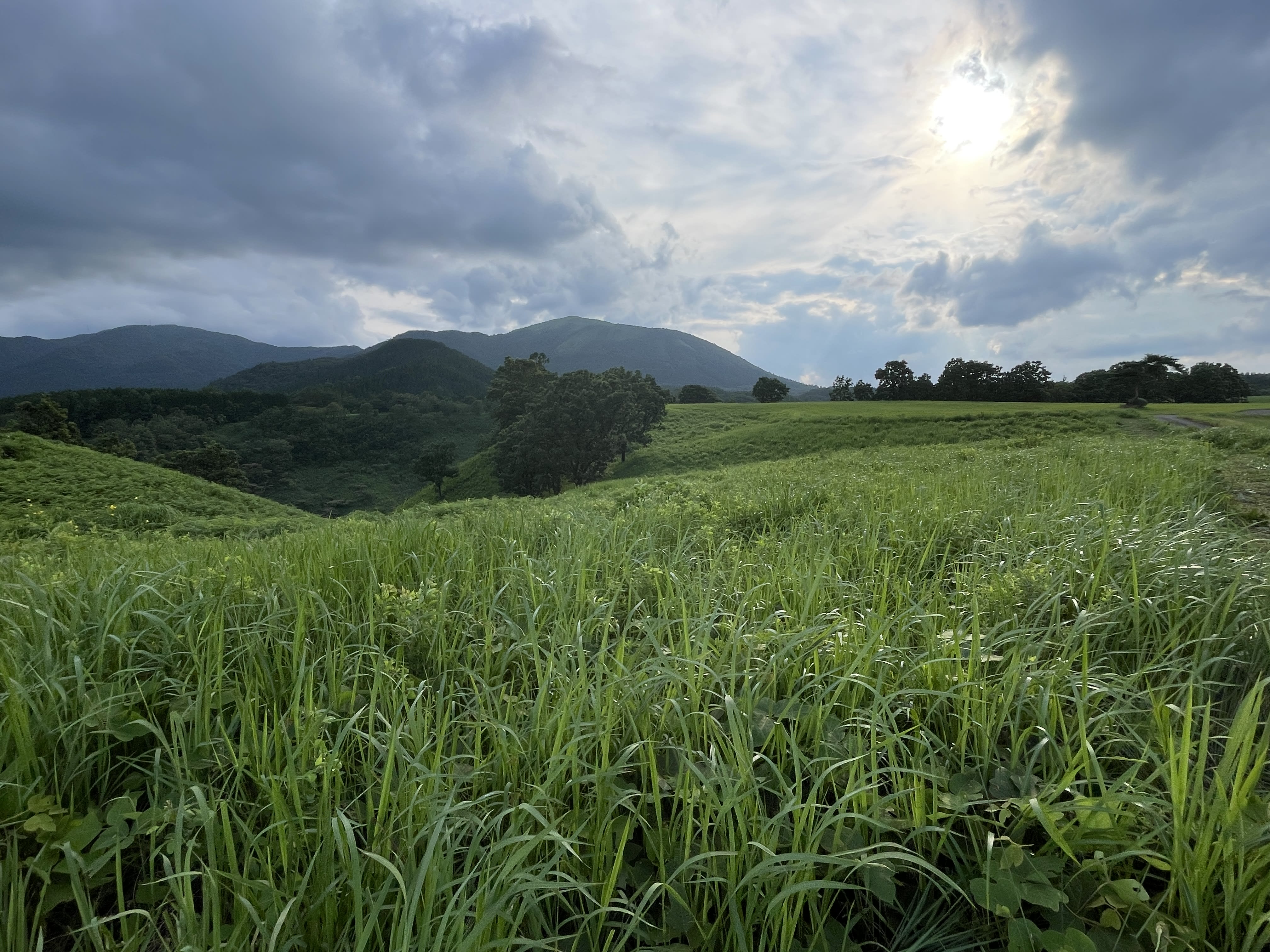
Grasslands in Hiruzen Culture, from Farming to Folk Song
“In Hiruzen, yamayaki is deeply intertwined with the soil,” says Chibu. “The soil here is a unique black kind known as kurobokudo. Its principle component is volcanic ash from intermittent eruptions of Mt. Daisen between one million and several hundreds of thousands of years ago. It’s acidic, which makes it difficult to farm rice, a plant that prefers neutral soil. The earliest records of yamayaki in Hiruzen, going back 800 years, show that it was part of the village’s efforts to improve the soil and produce enough rice to pay their annual taxes.”
Grass from the grasslands maintained by yamayaki was strewn on rice paddies to improve production and used as feed for the oxen who tilled the fields. It was also mixed with ox dung to create fertilizer. “A steady supply of grass was essential for rice production,” says Chibu. “From early summer into the early winter months, residents went out to harvest fresh grass every day.”

The grasslands also provided other vital resources. A tall plant in the grass family called kaya (in Hiruzen, this refers to plume grass) was allowed to grow all year until it was harvested in late autumn, around November, when it was used to rethatch roofs and insulate houses from cold seasonal winds during winter. As the snow thawed, the insulation was removed, chopped up, and strewn on the paddies and fields in its turn. The early spring yamayaki then started the cycle anew.
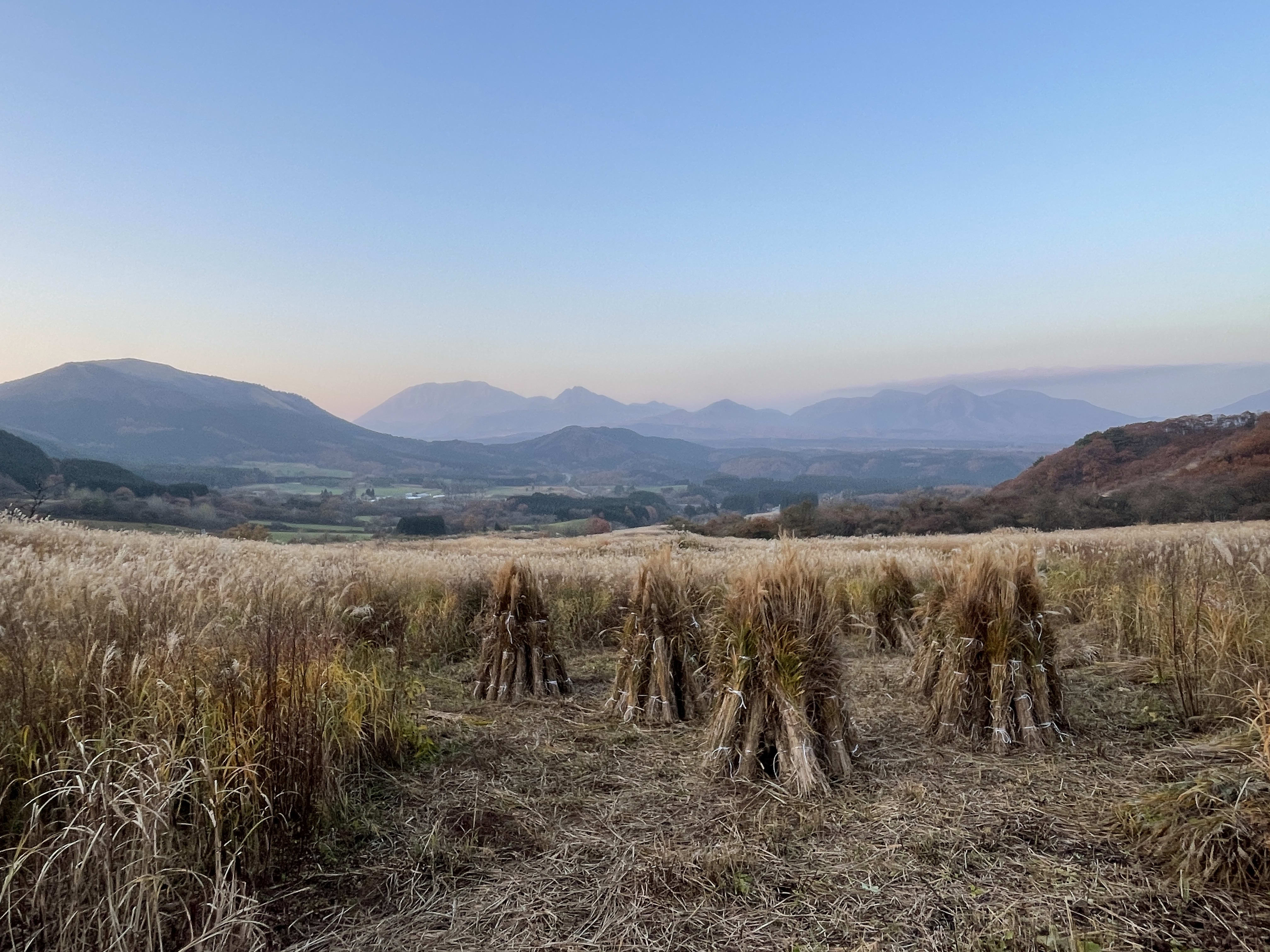
The grasslands were fundamental to the local way of life. They are even mentioned in the lyrics of the songs accompanying the Omiya Odori folk dance, which is performed at the Bon festival each August and has been added to UNESCO’s registry of Intangible Cultural Heritage.
Nor were humans the only ones who relied on the grasslands. “Hiruzen’s grasslands were historically quite extensive, but the 1,200 hectares of grasslands subject to yamayaki in the former Kawakami village area in the 1940s have now shrunk to just 90 hectares,” says Chibu. “These relatively tiny remaining grasslands are home to flora and fauna that would die out if the grasslands were allowed to return to forest.” This includes endemic species, like an endangered flat-faced longhorn beetle called fusahige-ruri-kamikiri in Japanese. This ecological value is another reason why Hiruzen and other local communities across Japan are determined to keep the tradition of yamayaki alive.
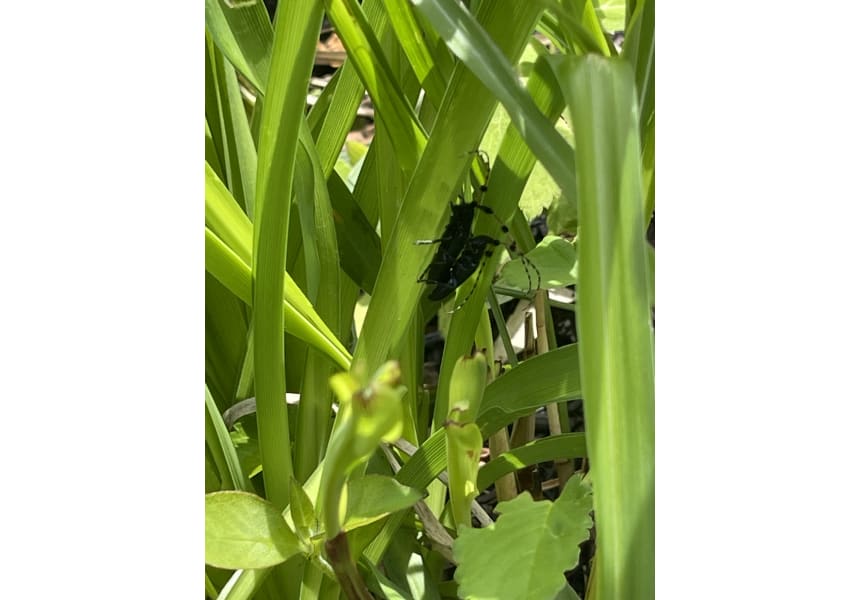
Yamayaki even plays a role in decarbonization. Although burning grasslands does release CO2, research in Aso, where extensive grasslands remain, has shown that the amount of CO2 released is smaller than the amount that remains on the ground as ash, so that the overall effect of preserving this landscape via yamayaki is actually carbon-negative.

Controlled Burns: A Traditional Art
Yamayaki has traditionally been an early spring event—a prelude to the year’s farming.
“The snow in Hiruzen is so heavy that people used to spend most of the winter indoors, isolated from each other,” says Chibu. “Yamayaki was the first opportunity in the year for people to reconnect with each other and celebrate surviving another harsh winter.” This made yamayaki important not just for agricultural reasons but also for the communication it facilitated—particularly at the communal feast held afterward.
In the past, every adult male in the village participated in yamayaki, but today some areas are handled by teams of volunteers who receive training in March. On the appointed April weekend, groups of participating residents and volunteers divide their designated mountainsides into sections and burn them one by one.
“The key is that the burn is always completely under control—it’s nothing like a wildfire,” says Chibu. Firebreaks are pre-burnt to keep fires contained, and each section is burned from highest ground to lowest, creating another natural firebreak that keeps the flames from raging upward unchecked. The main work of the volunteers is to carefully watch each section’s fire for signs of spreading, extinguishing the flames while they are still small with jets of water when necessary.
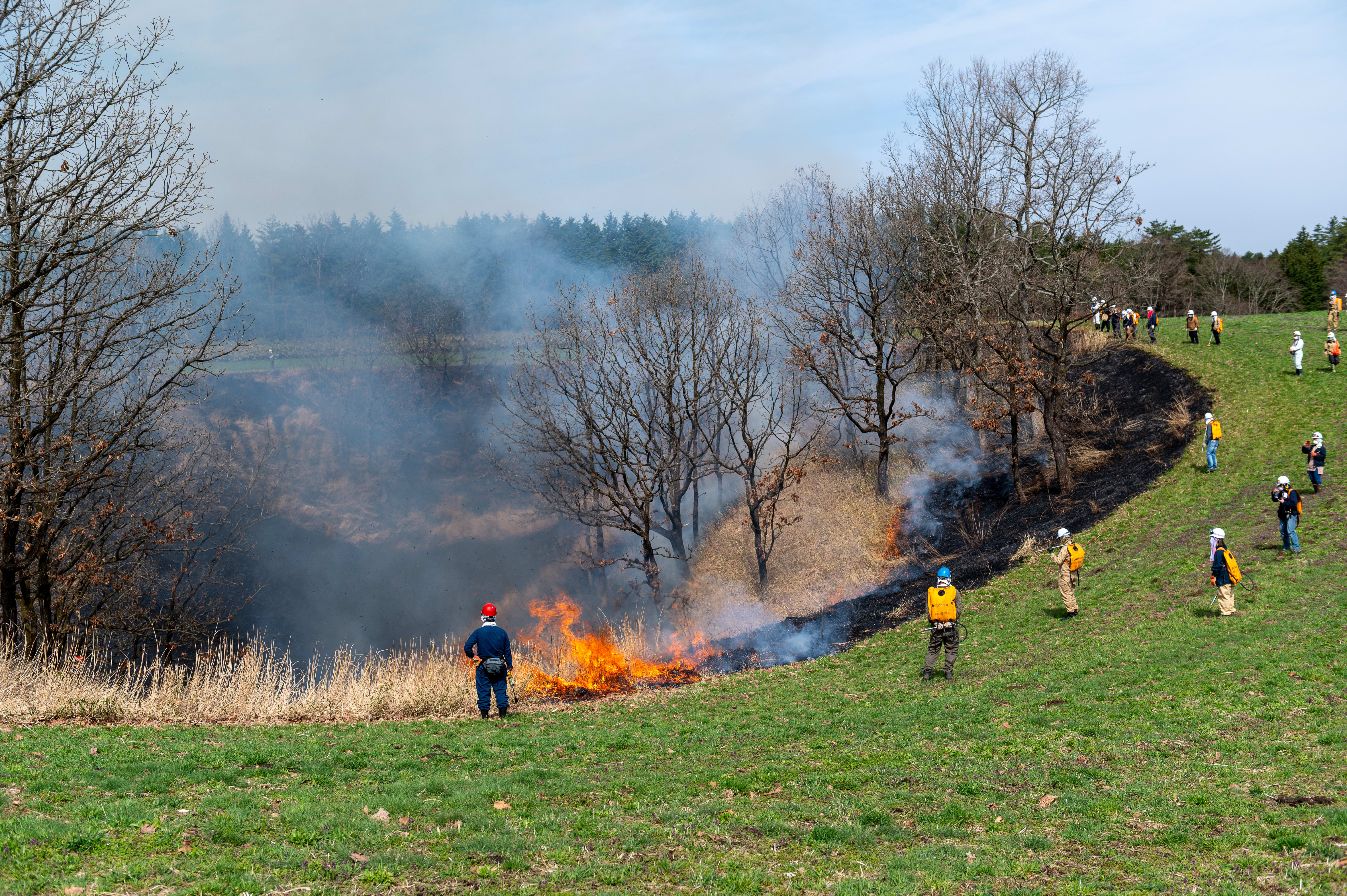
“This has been the basic procedure for centuries,” says Chibu. “Only the equipment is modernized.” In the past, fires were set with torches and put out by beating them with sticks and shoveling dirt onto them; today, gas burners and jet shooters fed by back-mounted 20 liter tanks are preferred.

Exploring the Landscapes Shaped by Yamayaki
The grasslands in Hiruzen preserved by yamayaki are mostly private property, and can be admired but not entered. However, there are tours and activities in Daisen-Oki National Park that offer excellent views of its unique landscape, from cycling through the Hiruzen highlands (some cycling tours also include a picnic lunch) to making the Hiruzen Three Peaks Traverse.
The Omiya Odori is a local dance with lyrics singing about the kaya fields. Dances are hosted at multiple sites throughout July and August, but the biggest single event, which anyone can attend, is held at Fukuda Shrine on August 15.
“A remarkable proportion of Japan’s natural scenery isn’t untouched wilderness, but satoyama landscapes,” says Chibu. “The Hiruzen grasslands were probably forests originally, but over the years they were recreated by yamayaki and other traditions into a natural ecosystem that other species depend on. Yamayaki isn’t destructive or harmful—it’s part of how humans have coexisted with nature here for centuries.”
There are many other sites in Japan’s national park system with their own traditions of yamayaki. Mt. Sanbe, also in Daisen-Oki National Park, has sweeping 360-degree views from its peak, which is accessible even to beginning hikers. Sengokuhara, the Asagiri Highland, and Mt. Myojin in Fuji-Hakone-Izu National Park offer subtly differing views of Mt. Fuji. The grasslands of Aso-Kuju National Park in Kyushu lie within the vast caldera of smoldering Mt. Aso. Check the “Things to See & Do” section on each park’s homepage for more information about enjoying visits to these sites.
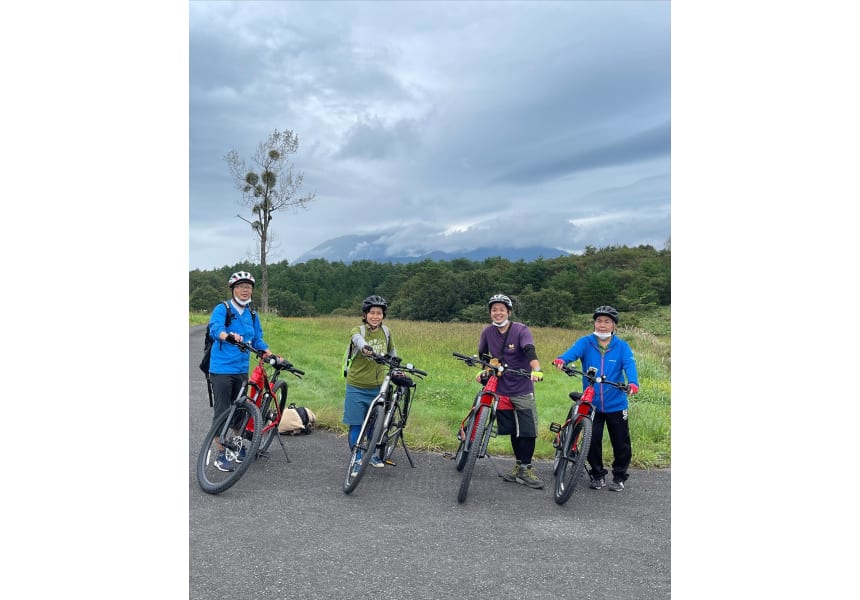
Doing Your Part to Protect the Park
- Be careful not to enter any grasslands without permission, and never pick flowers or other plants as souvenirs.
- Some communities allow visitors to observe yamayaki from a safe distance, but others restrict them to trained residents and volunteers only. Check for official information and guidance online about the area you are interested in before trying to attend.
- If you do attend a yamayaki event which permits visitors, always follow the safety instructions of the organizers.
